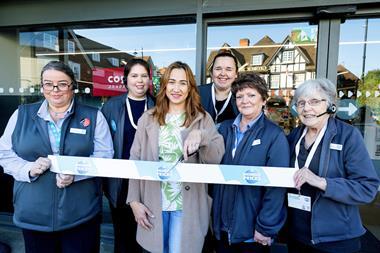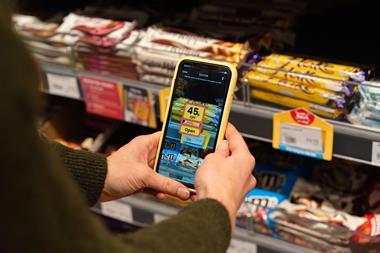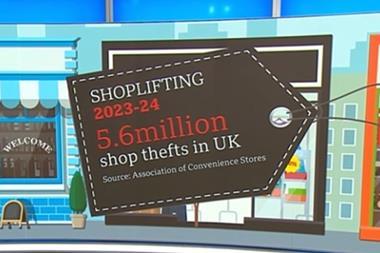Retailers in tourist locations have an advantage when it comes to sales and footfall in the summer months, but what happens when the weather turns and the holiday-makers stay at home? C-Store explores how stores in seasonal areas make the best of the winter season and adapt to changing demands
You could be forgiven for thinking that retailers, who enjoy a flurry of extra customers (and additional sales) during the summer, have it easier than the rest.
Stores in tourist locations can often rely on holidaymakers flocking to their stores to pick up fresh and chilled produce, BBQ and picnic items, as well as a huge increase in ice cream when the sun comes out.
Londis retailer Steve Bassett owns five stores in Dorset and Hampshire, with sites in the coastal towns of Bridgwater, Christchurch, two in Weymouth, as well as one in Southampton, so he is used to dealing with the peaks and troughs in demand.
He says: “We’re usually around two-and-a-half times busier in terms of sales during the summer, purely because there are a lot more people around than there are in the winter.”
Jamie Keshwara, co-owner of four Nisa stores in the East of England, also enjoys strong summer trade in his 2,400sq ft Nisa Deepdale forecourt. The Norfolk store is located next to a holiday campsite and relies heavily on trade from the summer holidays and people with second homes in the area. Over the summer, sales are in excess of £60,000 on a good week.
Venu Mittapally, who runs a Lifestyle Extra store in Llanelli, South Wales, also has a seasonal store as the town is a hotspot for beach travellers and campers. He explains: “In the summer, we get lots of European tourists who stay in rented houses in the area. Our store is on one of the main routes down to the sea so it’s very convenient for them.”
While these stores enjoy high footfall and increased sales over the summer months, come the winter they face an inevitable dip in custom, with the exception of the Christmas week. “In the week between Christmas and New Year, we always enjoy a spike in sales as a lot of people have second homes in the area that they use over the winter holidays,” Jamie says.
Steve also welcomes a few holidaymakers in the colder months. “Being close to the sea- side means we still get the opportunity to sell some more unusual products, like boxes of fudge,” he says.
But keeping business ticking over in the quieter winter months, and establishing a loyal local customer base when the weather is cold and the days are short, can be a challenge.
“We have less staff on in the winter but we still have a steady stream of people coming into the town centre,” Steve explains. However, holidaymakers are sorely missed. “It’s in the evenings and on Sundays when we really notice a difference.”
Sales at Nisa Deepdale plummet once holiday season is over. Turnover is just £15,000 a week (£6.25 per square foot), with the vast majority of purchasing coming from locals. “Sales are about a quarter lower on average in the winter than they are in the summer,” says Jamie. It may be a considerable drop from the heady heights of summer, but it is vital that the store encourages local custom during this time, to avoid a further hit.
In order to make the best of things, Jamie reworks his space during the colder months. “The change in trade means we have to make changes to the layout of the store and cut down on some of the usual lines we sell.”
As he isn’t selling as much fresh and chilled, he replaces one of the open bay chillers with an ambient bay, which saves on energy costs. He also reduces the amount of freezer space the store dedicates to lollies and ice cream.
Jamie says the changes to the fixtures create more space in the store and make the sections easier for customers to shop during the winter. “We want to make the shopping experience as good as it can be,” he says.
Steve also has to adapt his space to accommodate the change in demand. His flagship Westham Road store in Weymouth sits alongside an adjoining ice cream parlour. The unit proves to be a great earner for Steve in the summer and, although it’s closed during the winter months, it doesn’t go to waste.
“We use the parlour mainly for storage in the winter so we can hold more seasonal stock,” he says. “We also put posters on the outside of it. It works like a billboard that lets customers know that we sell American food and other promotions in the store.”
In addition to cutting down on seasonal lines, Steve and Jamie refocus their offerings around products that will draw in their remaining customers. The focus for Jamie in the winter is on the top-up essentials like bread and milk.
Meanwhile, Steve ensures he attracts the attention of local people by putting food to go and hot coffee at the heart of his winter range, and offering his own meal deals.
Venu has also recognised the draw of a good hot food offering when the sun no longer pulls in the punters. Despite not being able to count on seasonal demand from tourists, he is still determined to maintain sales in the winter by using his hot snacks and meals to appeal to local families. During November and December, school kids and residents account for around 90% of sales and footfall.
Venu says: “We have a hot food kitchen area in the store that sells sausage rolls, steak bakes, cheese and onion pasties and chicken tikka masala. We hope these products will sell well this winter, especially with families who need cheap meals. The hot food should help sales this winter and keep our footfall near to our average of 400 per day.”
Venu is also hoping the school run will help boost his winter sales. His store sits just a few metres away from a recently-built school, which houses more than 480 pupils.
He says: “The school is big help for us because we have nearly 500 parents coming past the shop with their kids every day.
“With free parking outside the shop and no charge for our cash machine, we try as best we can to get them in. The school bus drops the children off right outside too, so they can come in and buy food and drink before school opens.”
As well as offering products and services that will appeal to local people, another important aspect of ensuring a stable winter trade is by building bonds with customers. A lot of people around Venu’s store are elderly so he and his team like to spend time helping health carers who have been sent out to the shopping for nearby residents.
“They come in with a list and we help them find what they need,” Venu adds. “We always try to keep customers happy with personalised service.”
Steve keeps his regulars happy by offering a loyalty card for local shoppers, which means they get a discounted cup of coffee. “I don’t want to confuse people with pricing so we keep it simple with the card,” he says.
Jamie also looks to attract local residents in the winter by adapting his pricing. “As well as running more promotions to drive customers into the store, we also make fuel prices a bit cheaper,” he says. “It acts as another incentive for people to visit the store when things are quiet and fuel gets competitive.”
He claims that the lack of summer tourists allows him to strengthen his relationship with the local community. “In a way, it’s a nice time to be able to give something back to the local residents to thank them for putting up with having all the holidaymakers in the store earlier in the year.”
Losing a large percentage of your customer base over the colder months certainly brings its fair share of challenges, but provided you evolve your offering to drive as much business as possible, and maintain good relations with local customers, seasonal businesses can thrive in the bleak winter.
“We’ve been in Weymouth for about 10 years now so we’re used to the up-and-down trade and know our customers well,” says Steve. “It’s always a challenge to get people to shop in a c-store when it’s wet and dark but we want to provide a community service no matter what.”
Footfall drivers
Slush machines refresh sales all year round
Slush machines used to be seen as a seasonal summer product, but retailer Steve Bassett is reporting that his slush units are delivering strong sales in his Weymouth store in the winter too.
“Slush sales seem to have had a resurgence over the last three years,” Steve says. “We used to put our Geniune Slush Puppie machine away at winter time but now we keep it out throughout the winter months.
“I don’t know whether it’s the new flavours that appeal to people but it seems that everyone wants one, even when it’s cold. We get a complete mix of people coming in for them - it’s not just kids either, adults want them too.”
He adds: “I think it helps that they tie in with the food-to-go and meal deal missions. Most stores now will offer a slush as a drinks option with their meal offers. They offer good margins as well so they are a good thing for us to push.”
Prepare for the chill
With the impact of the winter months often working against a retailer’s aim to drive sales and build on customer numbers, the need for a strategy to deal with this downturn becomes all the more prevalent for those who rely on the tourist trade.
To minimise any downturn in revenue, Jamie Keshwara uses an Excel spreadsheet to plan for the winter and ensure his staff can anticipate any increases or decreases in demand.
“We’re always checking to see if sales are on a par with last year. Having all the figures and percentages means we can predict more quickly what will happen in the weeks leading up to Christmas,” he says. “I would say that retailers like us should make sure that they use all the data they have to plan for the winter and also get as much out of the summer as they can by selling more premium lines and high margin products.”
Steve Bassett thinks retailers in his position should look at the whole calendar year if they want to be ready for the winter months. “You can’t just focus on summer at the expense of winter,” he says. “January is tough for retailers across the board so I always say that you have to make sure you have a good November and December to balance out the drop in demand in the New Year.”




























No comments yet